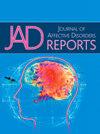Disruption of seasonal trends in mental health help-seeking behaviours during the COVID-19 pandemic
Q3 Psychology
引用次数: 0
Abstract
Introduction
The COVID-19 pandemic significantly impacted mental health globally. This study aims to explore seasonal and pandemic-related patterns in mental health utilization from various sources in Alberta, Canada.
Methods
We analyzed Alberta's administrative healthcare data to investigate mental health utilization trends. The International Classification of Diseases codes were used to identify mental health disorders, and we examined data by service types and demographic subgroups.
Results
The pandemic disrupted the typical seasonal patterns of mental health service use in Alberta, in addition to a notable surge in the initial pandemic months (April to June). Before the pandemic, distinct seasonal patterns were observed, but significant changes occurred after its onset. Notably, children exhibited distinct utilization patterns post-pandemic onset, differentiating them from other age groups. The number of COVID-19 cases did not fully explain these variations, indicating other contributing factors.
Limitations
Physician billing data, which could limit the detail in diagnoses, and the complexity of factors influencing mental health service use pose challenges to a comprehensive analysis.
Conclusions
The findings underscore the necessity for tailored mental health strategies that consider age and sex differences and address the evolving needs during and after the pandemic. Future research should delve into the underlying causes of altered service utilization patterns and assess intervention effectiveness, ensuring strategies are responsive and equitable.
COVID-19大流行期间精神卫生求助行为的季节性趋势中断
2019冠状病毒病大流行严重影响了全球精神卫生。本研究旨在探讨加拿大艾伯塔省各种来源的心理健康利用的季节性和大流行相关模式。方法分析艾伯塔省行政卫生保健数据,调查心理健康利用趋势。国际疾病分类代码用于识别精神健康障碍,我们按服务类型和人口亚组检查数据。结果大流行打乱了艾伯塔省心理卫生服务使用的典型季节性模式,在大流行的最初几个月(4月至6月)出现了显著的激增。在大流行之前,观察到明显的季节性模式,但在大流行发生后发生了重大变化。值得注意的是,儿童在大流行开始后表现出不同于其他年龄组的独特利用模式。COVID-19病例的数量并不能完全解释这些差异,这表明还有其他因素在起作用。局限性医生的账单数据可能会限制诊断的细节,以及影响心理健康服务使用的因素的复杂性,对全面分析提出了挑战。研究结果强调,有必要制定有针对性的心理卫生战略,考虑到年龄和性别差异,并解决大流行期间和之后不断变化的需求。未来的研究应该深入研究改变服务利用模式的根本原因,评估干预的有效性,确保策略是响应性的和公平的。
本文章由计算机程序翻译,如有差异,请以英文原文为准。
求助全文
约1分钟内获得全文
求助全文
来源期刊

Journal of Affective Disorders Reports
Psychology-Clinical Psychology
CiteScore
3.80
自引率
0.00%
发文量
137
审稿时长
134 days
 求助内容:
求助内容: 应助结果提醒方式:
应助结果提醒方式:


